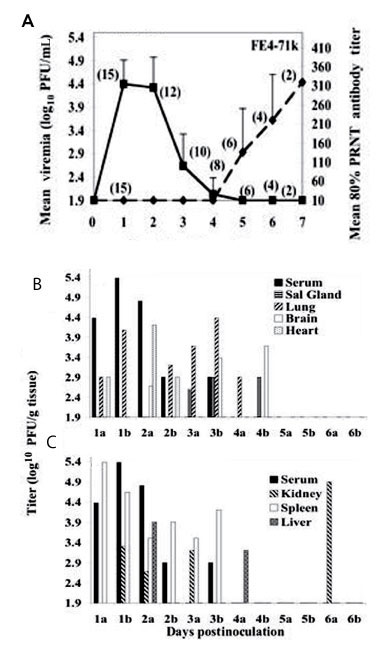Volume 10, Number 12—December 2004
Research
Experimental Everglades Virus Infection of Cotton Rats (Sigmodon hispidus)
Figure 3

Figure 3. A) Viremia and neutralizing antibody profiles in F1 Florida cotton rats serially sacrificed at daily intervals after infection with 3.2 log10 PFU of Everglades virus strain FE4-71k administered subcutaneously in the left thigh. Lines on each graph represent the geometric mean viremia or mean 80% plaque reduction neutralization test (PRNT) antibody titers; the number of rats bled at each time point is denoted in parentheses above each point. Error bars denote standard deviations. Everglades virus organ titers from the brain, salivary glands, lung and heart (B) and liver, kidney, and spleen (C) of EVEV strain Fe471k-infected F1 Florida cotton rats serially sacrificed at daily intervals. Two rats, denoted “a” and “b” were sacrificed daily from days 1–7 postinfection. No virus was detected in any organ on day 7.